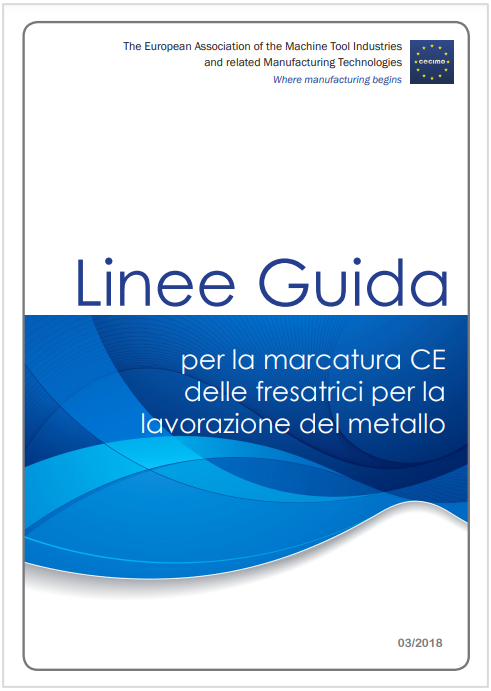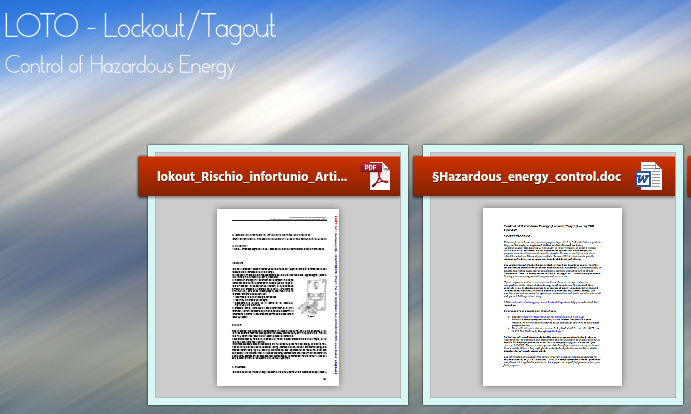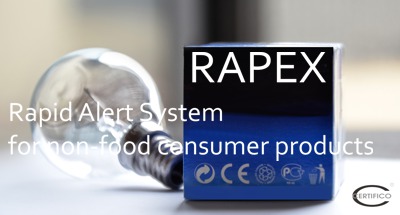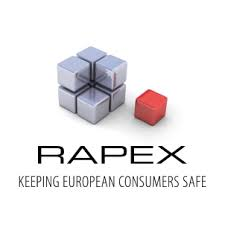
Linee guida marcatura CE fresatrici metalliche - CECIMO / In lingua IT
ID 4690 | Update Rev. 1.0 del 25.10.2022 / Disponibile versione IT allegata
Brussels, 01 Marzo 2018
CECIMO ha pubblicato in lingua italiana le "Linee guida per la marcatura CE sulle fresatrici per la lavorazione dei metalli".
Questa è la terza pubblicazione di una serie di linee guida volte a supportare le autorità di vigilanza del mercato, le autorità doganali e gli operatori economici nella valutazione della conformità delle macchine alla normativa europea sulla sicurezza dei prodotti esistente. "La circolazione di prodotti non conformi all'interno del mercato dell'UE mette a rischio sia la sicurezza dei lavoratori che la competitività dell'industria europea delle macchine utensili", afferma Juha Mäkitalo, presidente del comitato tecnico di CECIMO. «L'obiettivo degli orientamenti CECIMO è contribuire a una vigilanza del mercato più efficace nel mercato interno».
Obiettivi della guida
Verificare la validità della dichiarazione di conformità
Le Direttive UE applicabili alle fresatrici
La Dichiarazione CE di Conformità
Marcatura CE e segnali di avvertimento
Viene usata la marcatura CE ufficiale?
Dove può essere apposta la marcatura CE?
Quali attrezzature in pressione richiedono la marcatura CE?
Chi può apporre la marcatura CE?
Cosa va indicato sulla targhetta?
In che lingua devono essere le istruzioni?
In che lingua deve essere il fascicolo tecnico?
Cosa non può essere apposto sul macchinario?
Quali sono gli obblighi per l’importatore/distributore?
Le fresatrici con marcatura CE vengono provate e approvate dalle autorità?
Quali avvertenze devono essere apposte sulle fresatrici?
Verifica della conformità della macchina
Definizione di fresatrice
Ripari mobili
Istruzioni che devono accompagnare il macchinario
Informazioni sul trasporto
_________
Brussels, 01 September 2017
CECIMO has just published new ‘Guidelines for CE marking on metal working milling machines’. This is the third publication in a series of guidelines aimed at supporting market surveillance authorities, customs authorities and economic operators to assess the conformity of machines with existing European product safety law. ‘The circulation of non-compliant products within the EU market puts both the safety of workers and the competitiveness of the European Machine Tool Industry at risk’ says Mr. Juha Mäkitalo, Chairman of CECIMO’s Technical Committee. ‘The aim of the CECIMO Guidelines is to contribute to a more effective market surveillance in the Internal Market’.
The need for an effective market surveillance
Metalworking milling machines are machine tools designed to shape cold metal using a rotating cutting tool. It is one of the most commonly used processes in industry. In 2016, 53,679 milling machines were traded in the EU 28 and the number of machines brought to the EU market increases regularly.
EU legislation lays down the essential requirements for products to conform to, in order to guarantee a high level of protection for the health and safety of consumers, workers and the environment. The non-enforcement of these regulations creates unfair competition and undermines the competitiveness of those economic operators who do comply with the rules. Post-market control, in the form of market surveillance, has therefore an important role in creating a level playing field, which encourages competition centred around high health and safety standards, and not as a race to the bottom at the expense of these standards.
“The increasing number of products and the complexity of some of these products and legislation make sometimes difficult for national authorities to respond adequately to the challenges of the market. Through the Guide, we share our sectorial knowledge with the relevant stakeholders and facilitate market surveillance” explains Mr Mäkitalo.
CECIMO Guidelines to raise awareness and provide practical instructions for conformity assessment
CECIMO expects these guidelines to increase awareness among public and private stakeholders about the essential requirements on health and safety applying to machine tools. CECIMO guides provide a quick check-list to help conformity assessment and verify if the machine complies with the legal provisions, therefore allowing for the use of the CE marking.
Objectives of the guide
Machinery and equipment which are bound by specific European Directives cannot be placed on the single market unless they bear CE marking. CE marking affixed on a product indicates that the product complies with all relevant essential requirements (e.g. health and safety requirements) of the applicable Directive(s).
However, market surveillance in the EU often fails to prevent the entry of non-compliant imported machinery into the internal market and/or the circulation of non-compliant European machinery in Europe. Machines which do not meet essential health and safety regulations threaten health and safety in the workplace and put workers’ lives in danger.
Moreover, manufacturers and suppliers who do not comply with European regulations benefit from reduced production costs and gain an unfair comparative advantage in the market.
This distorts competition and undermines the competitiveness of European manufacturers who invest a significant amount of their resources in the development of products with high safety standards meeting European regulations.
Cases of non-compliance may occur due to lack of information (or misinformation) of producers who fail to meet the relevant essential requirements or due to deliberate infringements by producers who want to unfairly cut their production costs.
Improving EU market surveillance requires better communication towards economic operators on EU regulations, standards and conformity assessment procedures to improve ex-ante mechanisms designed to ensure compliance with EU law. Ex-post mechanisms allowing market surveillance authorities to check compliance should also be strengthened.
CECIMO believes that effective market surveillance requires close cooperation between economic operators, customs authorities and market surveillance bodies.
In line with this view, the present guide aims to contribute to the ongoing work led by the European Commission to enhance market surveillance in the internal market, under the New Legislative Framework.
We hope that this guide will be a valuable source of information for manufacturers, sellers and users of machine tools as well as customs authorities to detect noncompliant products in the internal market.
Better functioning market surveillance will contribute to creating a more secure working environment for workers and a more competitive European industry
...
Objectives of the guide
Verifying the validity of the declaration of conformity
EU Directives which apply to milling machines
The EC Declaration of Conformity
CE marking & warning signs
Is the official CE marking used?
Where can the CE marking be placed?
Which items of pressure equipment might need CE marking?
Who can affix the CE marking?
What shall be included on the nameplate?
In which language shall the instructions be?
In which language should the technical file be?
What shall the machine not bear?
What about the obligations for the importer/distributor?
Are the CE marked milling machines tested and approved by the authorities?
Which warnings should be included on electro-discharge machines?
Verifying the conformity of the machine
Definition of a milling machine
Moveable guards
Accompanying instructions.
Transportation information
Allegati
|
Descrizione |
Lingua |
Dimensioni |
Downloads |
 |
|
IT |
2640 kB |
103 |
 |
|
EN |
2659 kB |
20 |




































